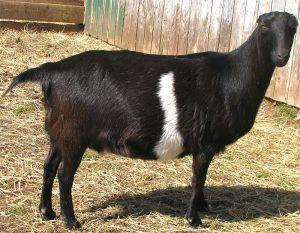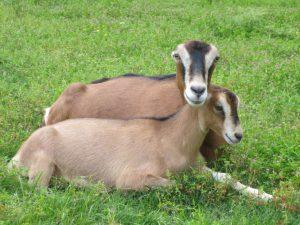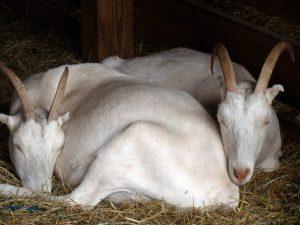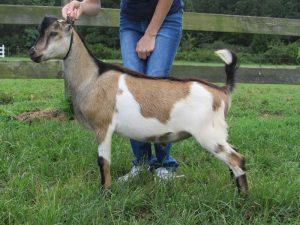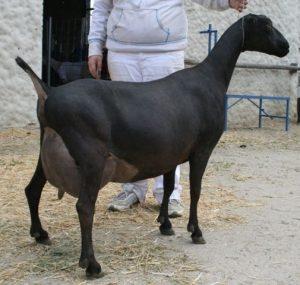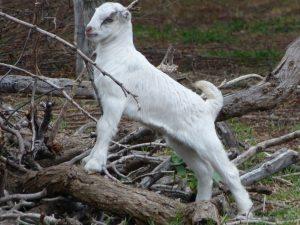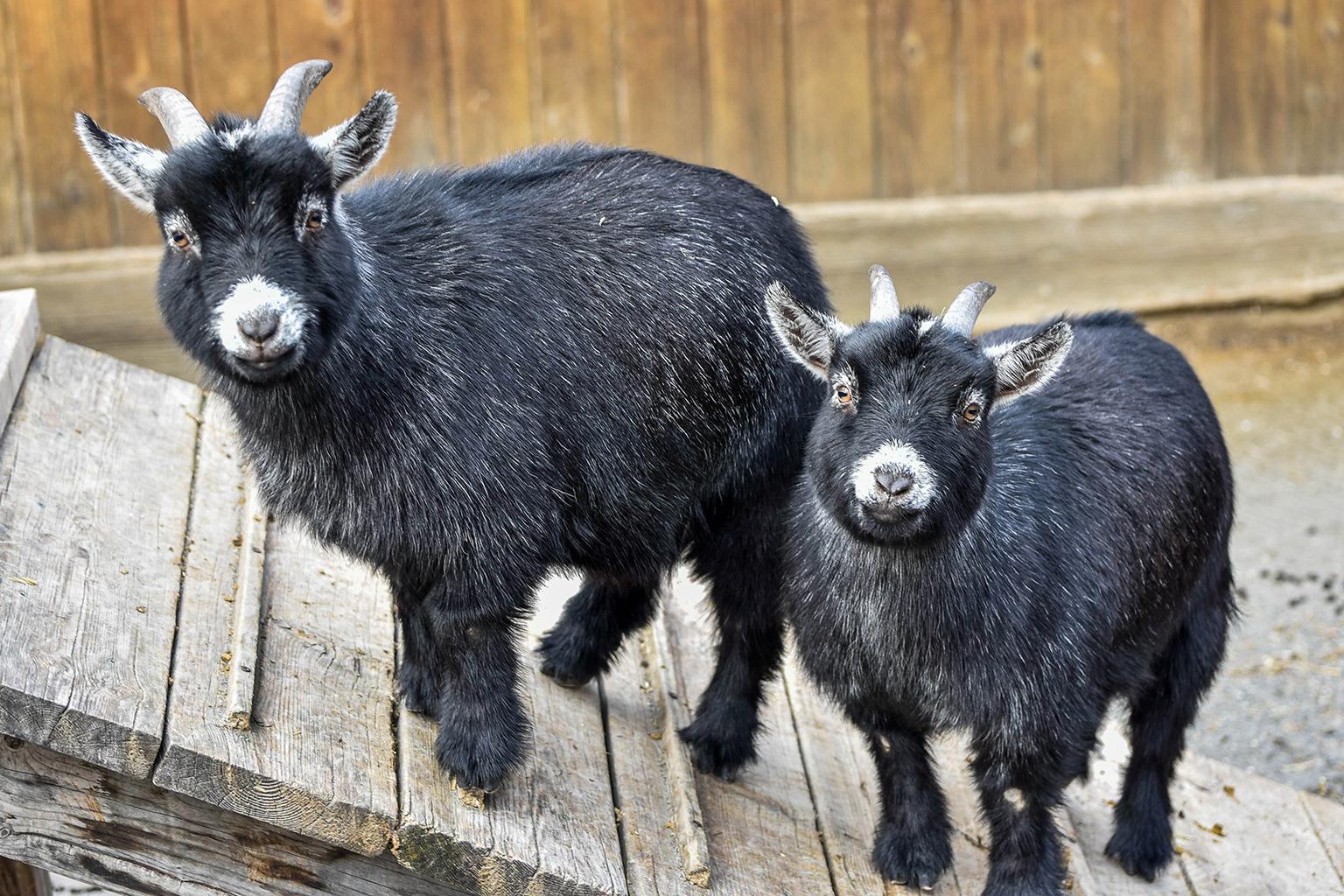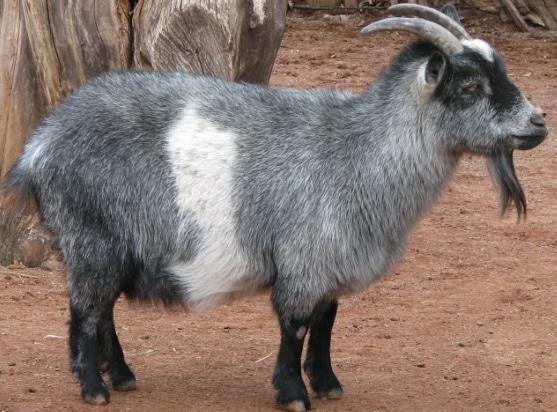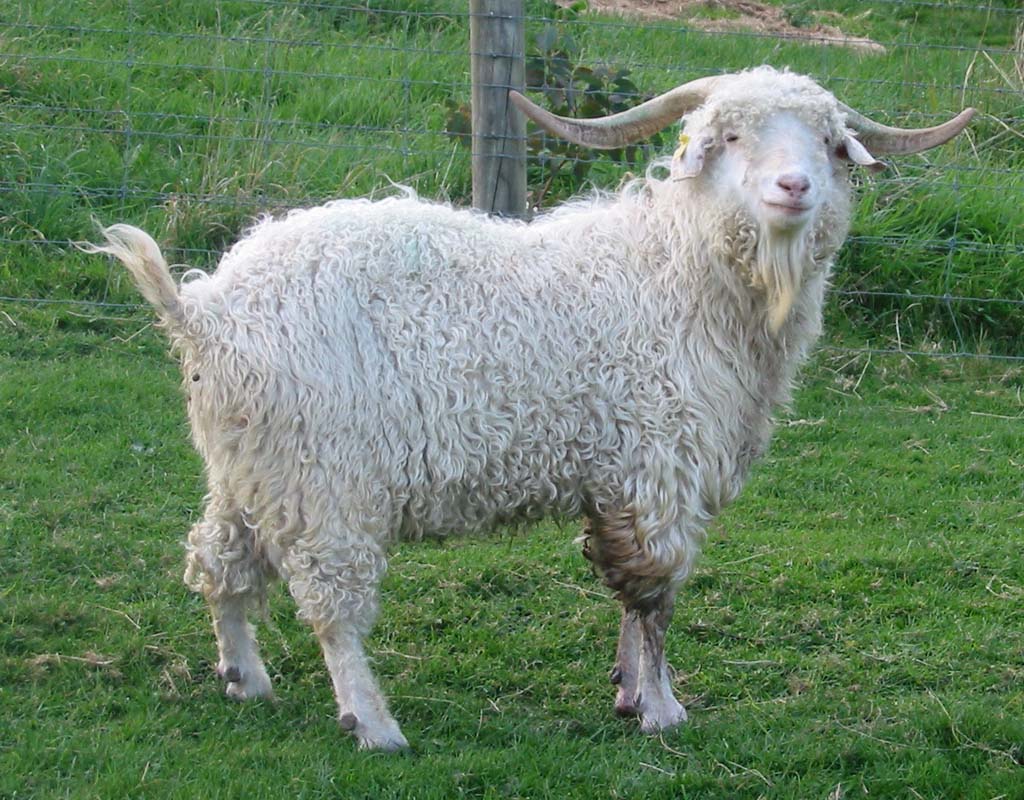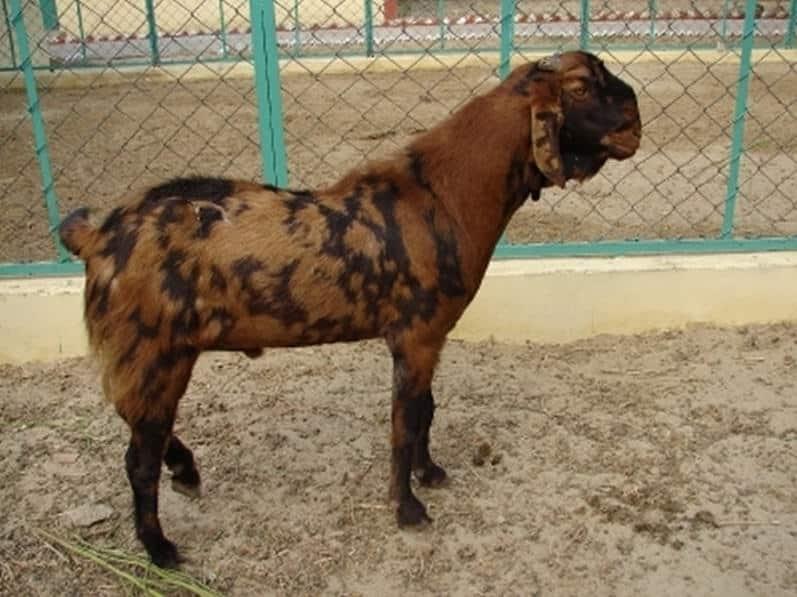Lamancha Goat
The Lamancha, also known as American Lamancha, is a breed of famous dairy goats easily distinguishable by their unique small ears. They have rapidly gained popularity for their high milking ability and loving temperament, not only in the US but also internationally. Because of their distinctive appearance, Lamanchas are used as breeding and show animals. Their intelligence and friendly nature make them a suitable pack or cart animals, as well as loving companions.
| Also Known As | LaMancha, American Lamancha |
| Physical Characteristics | A sturdy body, straight face, with either gopher ears (maximum length of 1 inch, having no or little cartilage) or elf ears (maximum length of 2 inches, having shaped-cartilage) |
| Temperament/Personality | Curious, affectionate, relatively quiet, easy to care for |
| Color | A wide range of hues and their combinations may occur |
| Coat | Short, smooth, glossy |
| Weight | Bucks: 72.6-74.8 kg (160-165 lbs) Does: 58.9-61.2 kg (130-135 lbs) |
| Height | Bucks: 76.2-78.7 cm (30-31 in) Does: 71.1-73.6 cm (28-29 in) |
| Uses | Milk production |
| Diet | Fresh vegetables, herbs, shrubs, alfalfa hay |
| Lactation Period | Averages 280-284 days, with maximum production occurring 1-1.5 months after kidding |
| Lifespan | 7-10 years |
| Climate Tolerance | Can survive harsh conditions |
| Country of Origin | The United States |
| Standard and Qualification Information | American Dairy Goat Association |
History and Development
Spanish colonialists in Mexico and California had taken with them unique short-eared goats similar to the Murciana found in the coastal regions of Spain. They used these goats for milk and meat production. During the early 1900s, some of these original goats were found in Phoebe Wilhelm’s estate in northeastern California. She bred these Spanish goats with Toggenburgs to produce a variety with high milking ability.
After the death of Phoebe Wilhelm in the late 1930s, Edith Goodridge bought 125 goats from the estate and found that half of them had the gopher ears while the other half had elf ears. Eula Fay Frey, along with her husband, Jene, bought the Poplar Dairy in California, consisting of 130 goats, of which a doe and a buck had the distinctive short ears.
The short-eared buck, in 1938, sired a beautiful doe named Peggy with short ears and large eyes. She was a high milk-producing goat, yielding 10-12 lbs of milk per day. In 1940, Eula Frey bought a short-eared, attractive doe with high milking ability. She continued breeding these goats in order to develop a breed that would have high milk yield and butterfat content.
In January 1958, these short-eared goats were formally registered as American Lamancha or simply Lamancha.
Meat Production
Breeders and farmers often cross a Lamancha doe with a Boer buck to produce kids that are suitable for meat production. It is believed that the quality of the meat you get with the cross depends on the genetics of the Lamancha doe.
Milk Production
American Lamanchas produce about 2,100 lbs of milk per lactation on an average basis, with 3.2% protein and 4% butterfat content.
Kidding
The breeding season occurs during the fall and winter when the does remain in heat for one-two days every 18 to 21 days. After carrying their babies for around 155 days, they usually give birth to 2-3 kids. A doe attains sexual maturity quite early at five months of age. Still, breeders typically wait until it is either eight months old or weighs 80 lbs to prevent potential kidding issues.
Interesting Facts
- Lamancha is the only dairy goat breed developed in the USA.
- Mini Lamanchas, created by crossbreeding Lamanchas with Nigerian Dwarfs, are a common variation known for being easy keepers and high milk producers.

